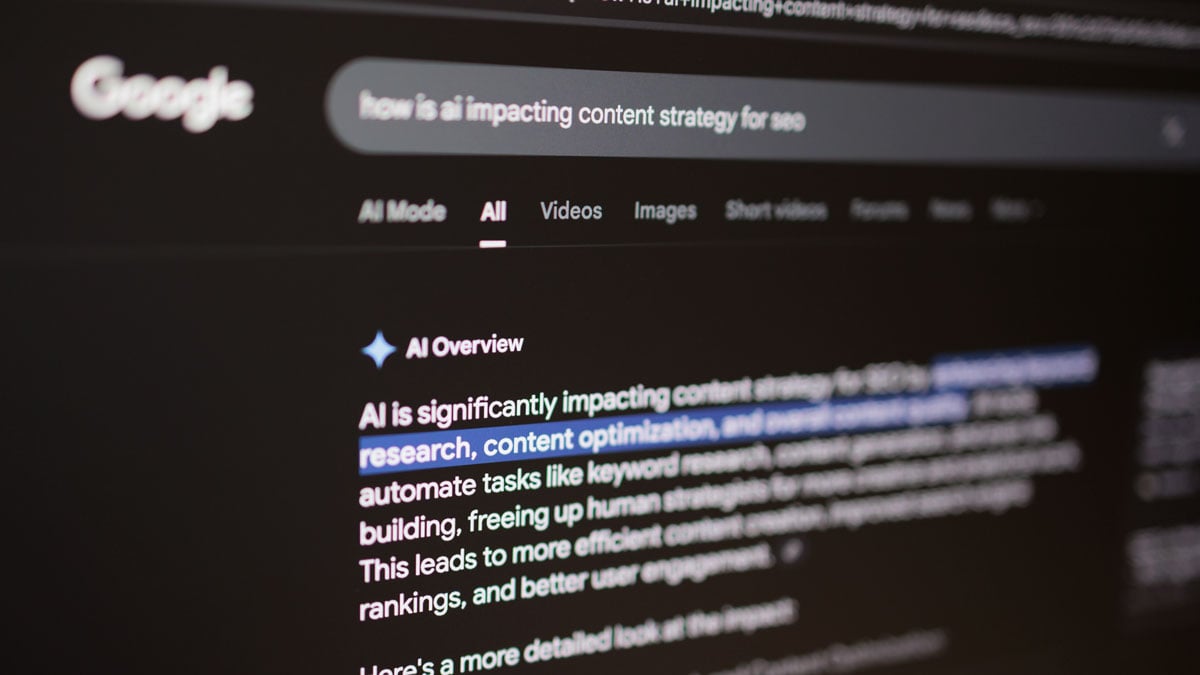Why the Best Marketing Trends are the Worst

April 16, 2020

Data drives results. So why aren’t you seeing them? Copy needs to be short and sweet. But how short is too short? Create more inbound content! Or should you? And what is it?
In the early ‘90s, I read the book, “What I Saw at the Revolution,” by Peggy Noonan. Noonan was a speechwriter for President Ronald Reagan, and the title referenced the “Reagan Revolution,” a period of political upheaval and change.
That book stayed with me, and I was reflecting on it recently when I realized it was a good way to think about the marketing revolution over the last 10 years. So here are trends I’ve seen that started with good intentions but are now pitfalls for many marketers.
Index
- How should marketers use data?
- Creating inbound content: What and by Who?
- What are good copywriting practices?
“We all need more data!” But what does it really do for us?
Ok, I realize that data is important and can lead us to make better decisions. What many don't realize, however, is that it can completely cloud your vision. A stunning marketing idea can start with good data, but it also needs a “spark.” That “aha” moment where data collides with creative genius and creates something magical. Without creativity, data is just numbers. And as great as it is to have the numbers, they don’t lead to anything that hasn’t been done before.
As the push for acquiring data continues, many marketers are guilty of one of the following:
- Lacking a strategy to use their data
- Using data to shape their strategy
The problem is, data without a strategy is useless, and using data to drive your strategy yields unoriginal or weak results. Neither strategy nor data is meant to be viewed in a vacuum. Ideally, they coexist, driving each other to garner the best result. And evaluating results based on data, such as traffic volume and likes, is very ineffective. For example, a social post may be liked and shared a lot, but if the goal to nurture and convert wasn’t reached, that data was likely misleading.
So what to do? Rik Haslam, a creative partner at BrandPie, recommends employing hypothesis-based strategies. Data should be used to prove hypotheses, instead of shaping strategies. And that requires putting in the necessary hours of teamwork and collaboration to fuel creative thinking. Data doesn’t yield results. It shows results.
As the investment in data grows, the focus on creative thinking is shrinking—and that’s a trend that needs to stop.
“It’s all about inbound, create more content!” But what, and by who?
The inbound marketing craze has led to a plethora of content—but a lot of content is just plain bad. Have you ever downloaded an eBook that was obviously someone’s PowerPoint presentation? Or a case study that reads more like a Terms and Conditions? There’s a rush to push out more content with the inbound hype, but the quality of content is suffering—whether due to lack of time, resources, or in most cases—expertise.
Fighter planes without fighter pilots are worthless.
Behind every good piece of content is a skilled creative director, designer, copywriter, art director, photographer and more. Yes, every company can benefit from inbound marketing, and when you have the tools anyone can do it—but not everyone can do it right. Anyone can have Adobe Creative Suite but that doesn’t make them a designer. Everyone can write but not everyone has the gift of wordsmithing a concise, compelling story. A digital camera with a full-frame sensor doesn’t make you a photographer. In many cases, it simply helps you take bigger bad pictures.
As everyone jumps on the content creation bandwagon, remember quality over quantity yields results. And that requires having the right people who understand your business and have the ability to draw out your story.
“Attention spans are decreasing, write shorter copy!” Yes—but no.
Declining attention spans combined with online overload has led to the desire for brief, scannable copy. For copywriters, pairing that with keywords optimized for SEO doesn’t leave much room for creativity.
Without a doubt, there are many scanners out there and brevity is important. But if you give viewers something worth reading—they’ll read! As infamous advertising exec Leo Burnett said, “Make it simple. Make it memorable. Make it inviting to look at. Make it fun to read.” One thing’s for sure. Copy needs to encourage scanners to read. If your focus is stuffing as many keywords in the shortest amount of copy possible, take a step back. Ask yourself:
- What story are you trying to tell in the first place?
- Is it worth telling?
- Is it meaningful to my audience?
Every human reacts to a compelling story. Stuffing keywords into a sentence that wouldn’t get past your eighth-grade English teacher is a turnoff. Even worse, it’s an open invitation to ignore your content in the future. Seek substance and points of differentiation.
Copy should be goal-oriented. That starts with knowing your audience and why they are coming to your web page.
- Do they know there’s a problem?
- Do they have a challenge but are unaware of your solution?
- Or do they know the solution but not your product?
No matter the length of the copy, if it speaks to a different stage of awareness than they’re actually in, they won’t convert.
So yes, writing concise copy is important, but it shouldn’t be the goal. Write to the needs of your audience. Don’t let it get so keyword-focused that it loses persuasiveness and human connection.
“What I Saw at the Revolution” was an inspiring look at how new leadership led to massive change. We need to make sure the marketing revolution of the past decade doesn’t keep us from losing sight of what truly helps us connect with our audiences.





